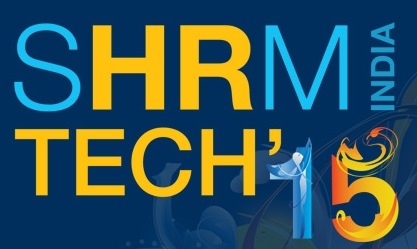The speakers were of the opinion that though technology can be used to one’s advantage by reducing the lead time for screening candidates and shortlisting the right fits, the human intervention and the process of face-to-face interviews can’t be totally undermined.
From classified print ads to classified job portals, and now, to specialised job portals, the world of hiring has evolved in the last few decades. The latest fad, though, is to hire through the social media, and other data analytical tools.
The panel of senior HR leaders at the SHRM Tech 15 event held at Mumbai on Friday, discussed how technology has changed the recruitment process, especially mass hiring.
The session was moderated by Raman Thiagarajan, founder, Mera Jobs, who referred to a survey which stated that 35 per cent of the job seekers felt that though there were plenty of jobs available in the market, there very few relevant to them.

The floor was thrown open to Aparna Sharma, ex-country head, HR, Lafarge India, who spoke on how technology is aiding mass hiring as well as the challenges in this segment.
She pointed out four key challenges in mass hiring. The first being the cost as every organisation wants to optimise the hiring cost and also maintain a consistent quality, which is the second challenge for an HR executive.
According to Sharma, the third challenge was the availability of relevant talent. It is not easy to find the right skill-fit as well as the right cultural-fit with the organisation.
The last challenge was finding the right talent and the fear of going wrong in case of hiring in large numbers. Sharma said, “Even if an application achieves 95 per cent accuracy it should be good enough as the human interface could result in error in 5 per cent of cases.”

Next in line among the panelists was DP Singh, V-P and head HR, IBM, India & South Asia. He stated that today there are around 1 billion searches on the Web for jobs every month and there has been a 120 per cent growth in the use of mobile apps for recruitment. This is an indicator of how the technology has changed the hiring process.
Singh commented that a mobile-optimised process —although 90 per cent of the organisations do not have such processes in place — offers immense possibilities, be it in terms of analytics, screening and filtering of candidates, or doing a reference check, all at one’s leisure and convenience. In addition, the use of video technology has changed the whole hiring process and hiring decision-making in a big way.

The third speaker on the panel, Ravi Shankar KK, director & country head, Harrison Assessments, said that despite all the technologies that come into play, human intervention cannot be undermined. After all, human resources is a human subject. He said that most technologies and applications are good at defining the eligibility criterion of the candidate but not the right fit. The right fit can be evaluated by understanding the candidate’s passion for the job, and this can be derived only by human intervention. He strongly believes that it is impossible to find the right attributes in a candidate unless there is a one-on-one interaction, and video interviews are often not the required substitutes.
Sharma concurred that certain selection procedures, such as a face-to-face interviews, cannot be eliminated altogether by a totally mechanical process. “It is only the initial screening that mobile applications can enable.”
KK concluded that technology plays a great role in reducing the lead time for the recruitment process and it helps in shortlisting the right candidates for the final interviews.
Value our content... contribute towards our growth. Even a small contribution a month would be of great help for us.
Since eight years, we have been serving the industry through daily news and stories. Our content is free for all and we plan to keep it that way.
Support HRKatha. Pay Here (All it takes is a minute)




































